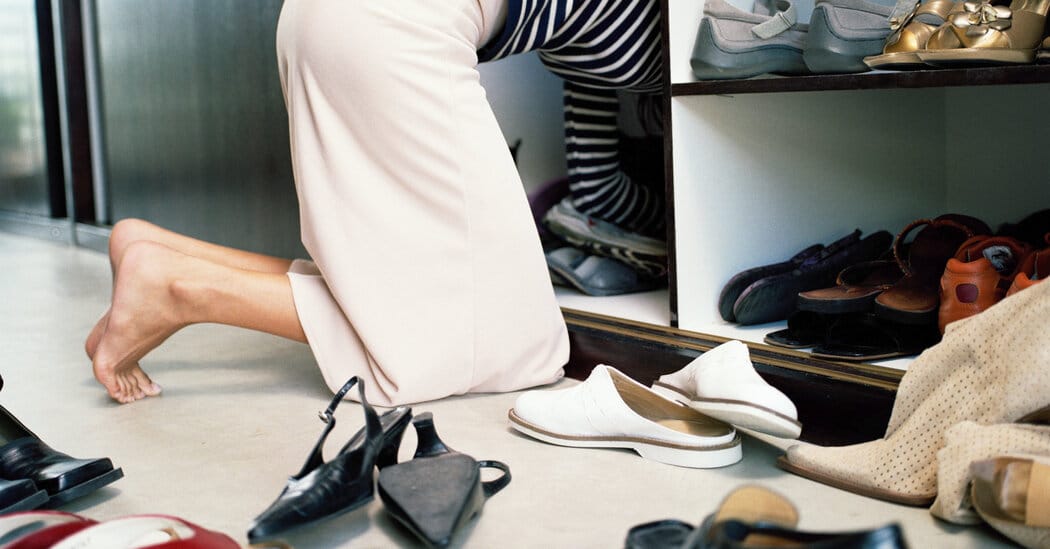[ad_1]
I’m recently divorced after 14 years. I have lived around the world and, in a month, I am set to move to Los Angeles. Over the years I’ve amassed a wardrobe that expresses both the energy of the places I lived and the lives I lived in them with the person I once loved. But everything in my life is downsizing. So what do I keep? What do I shed? How to make these choices? — Donatella, Brooklyn
Not long after the actress Ellen Barkin divorced the billionaire Ronald Perelman when she was just starting to film “Ocean’s Thirteen,” Ms. Barkin decided to sell off all the jewelry she had acquired during her marriage: a collection of over 100 pieces that had been valued at more than $15 million.
“These are just not memories I want to wear out every day,’’ she told Ruth La Ferla, who wrote about the sale for The New York Times.
That’s an extreme reaction to a divorce, but also an understandable one. Forget Proust’s madeleines; clothes are repositories of emotions, memories and stories, and simply seeing them can take us sliding down the wormhole to the past. That’s in part why we hang on to them: They contain the emotional imprint of who we were when we bought them, or wore them.
That habit is often seen as a good thing. It is what’s behind the practice of keeping a wedding dress, symbolic of that rite of passage. Likewise, my mother-in-law had a rose-print frock that had hung in her closet for decades — a relic from the time she met Queen Elizabeth II as a young woman after a taking a boat across the ocean from Canada.
But this practice can backfire if the stories contained in the material are unhappy. If, say, you see a pair of jeans and remember the fight you had with your partner when you wore them, or a certain dress makes you recall some bad news you received or a skirt brings up feelings of betrayal or entrapment. That’s why, when it comes to divorce, magazines such as Glamour occasionally feature articles like, “Getting Over a Divorce Meant Saying Goodbye to All my Beautiful Clothes.”
In your case, the best approach may be to simply go through your wardrobe and see what emotions are conjured by each garment — essentially play free association with your clothes. Perhaps do it with a friend, who can hold up each piece while you say what comes to mind. It’s a variation on Marie Kondo’s “does this bring me joy” approach. Sort the garments into piles (keep, discard) according to the feelings they evoke. If you can’t decide, create a third group of maybes. After all, pain does recede with time, and it is possible that a shirt currently full of angst that once upon a time also represented, say, exploration, might one day again.
As for the discard pile, take a page from Ms. Barkin and consider selling clothes in good condition on resale sites like Vestiaire or The RealReal. That way, you are not only escaping bad memories, but also profiting from them and using them as a way to move forward into your next phase. Anything that can’t be sold and is still in good shape should be donated — just because a piece represents something negative for you doesn’t mean it can’t be a delight for someone else, which in turn may be a soul boost for you.
And don’t think of the clothes you may abandon as a sacrifice. You want to winnow down your wardrobe not just because you are being forced to by moving into a smaller apartment, but because it’s liberating to create both literal and psychological space for a new you, with a new look, to emerge. That opportunity is a gift you can give to yourself.
Your Style Questions, Answered
Every week on Open Thread, Vanessa will answer a reader’s fashion-related question, which you can send to her anytime via email or Twitter. Questions are edited and condensed.
[ad_2]
Source link








